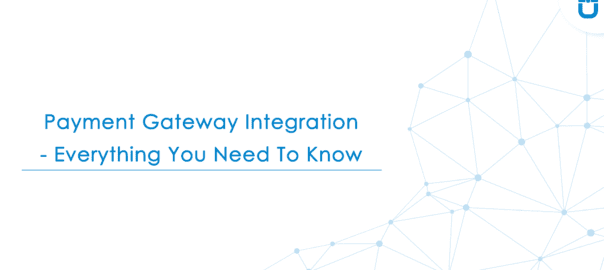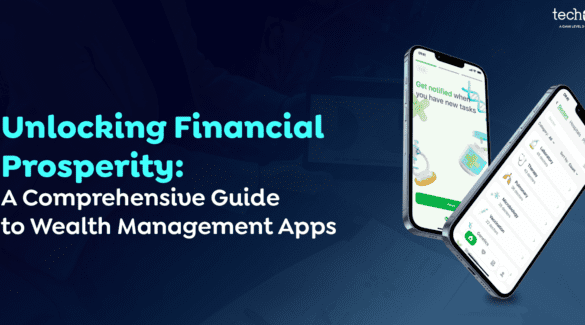3 Jun 2019
Payment Gateway Integration – Everything You Need To Know
Techugo Pvt. Ltd.

If you are engaged in online business, surely retaining customers by providing them with immense ease, would be your major priority. From searching product to buying online, payment is a major aspect that can retain customers on your website or mobile application. So, it is crucial to integrate a quick and easy to use payment gateway.
That’s why, as a merchant you need to be very cautious while picking the payment gateway solution, as satisfying the customers’ need and your business’ requirement both are equally important. Not it must have fraud protection only, but also it must support different payment methods. Along with that, convenience and platform compatibility also make a count.
According to the researches, many customers abandon their shopping carts due to the inconvenience of payment system. This inconvenience can be any, such as the need for filling too much information, or unavailability of required payment mode. So, to retain customers it is very crucial to pick the right payment solution. Now you would have understood the importance of payment gateway, it makes sense to talk about its integration and its work.
How does payment gateway work?
The payment system works in accordance with three nodes: platform, customer and payment gateway. Actually, it is a place on your business application, where customers can make transactions while buying any products or services. It means, that you can accept payment on your application with the help of payment gateway.
In this condition, the only question arises; what is payment gateway? Take a glimpse of this system.
What is payment gateway?
Basically, a it is a service that authorizes payments in the eCommerce and online stores. This serves as the portal to allow transaction flow between merchant and customer. This gateway works on a security protocol and encryption mechanism to pass the transaction data with required safety. The transaction data gets transferred from an application (website, mobile app, mobile device) to the payment source and processor (bank) and back again.
What a payment gateway can do?
Well! the payment gateway is an entity that accomplishes various types of transactions, here are some transaction types it can execute:
Authorization: This type of transaction is used to verify the availability of the fund. It means it checks if customer has enough fund to make the payment or not. This process doesn’t include the transfer of actual money. Instead, it verifies that cardholder is capable of making an order or not.
Capture: This type of transaction, is actual processing of previously authorized payment, basically, it sends money to the merchant’s account.
Sale: This process is a combination of authorization and capture transactions. In this, payment gateway first authorizes the cardholder. And then money may or may not be transferred. It is a faster payment mode for immediate purchase.
Refund: This type of transaction includes reimbursement of the canceled order. If any order gets canceled, a merchant has to apply a refund payment process to repay the money to customer.
Void: It is similar to the refund process in the condition when funds are not transferred.
Well! now it is clear what types of payments it performs. It is right to talk about the process of payment gateway integration.
How to integrate payment gateway?
1:- Payment gateway merchant account: The first thing that you need is merchant account. This is a type of account that allows merchants to process online debit and credit payments. In this account, payment gateway deposits funds from your credit card sales. Later, the funds get automatically transferred into your bank account, according to the designated schedule. So, it is very important for you to acquire a merchant account before setting the payment gateway.
2:- Back account info linked to the merchant account: Later you need to link your bank account to merchant account to receive money in your bank account.
3:- SDK’s required to integrate into the application: Now, you need to add payment gateway API/SDK to integrate in your application. Once you add it in your application, you can achieve further integration.
4:- Integration Mode:– Later you need to go with sandbox testing, once it is done successfully you can switch to the production mode.
a:- Sandbox (Testing): With this, you need to make test payments by all available payment methods, to ensure the expected outcome.
b:- Production: You can make it live after completion of testing.
5:- Transaction types:– Once you make it live, now you need to set transaction type, which includes:
a:- Direct to payment gateway merchant account wallet
b:- Or directly transfer to the bank account of any other merchant linked or not linked with that payment gateway.
Note: You have to stick with the policies of the gateway you are going to integrate (eg:- mode, wallet, charges of transactions, etc.)
How to choose the payment gateway?
In this endeavor, choosing the right payment gateway makes a count. So, here are some points that you must consider:
1. Analyze the pricing of payment gateways
Payment processing involves various financial institutions and organizations. Like other transaction services, payment gateway needs a fee for utilizing the third party tools to authorize and complete the transaction. These transaction services charge the transaction fees according to the amount of transfer, location, and type of products. Therefore, every gateway service provider has its own fees. So, before picking anyone read all the documents that suggest pricing, to avoid hidden or additional expenses.
2. Consider merchant account options
Actually, a merchant account can be opened through a bank or a payment gateway provider. It means you can get the merchant account as a part of gateway service. So, consider what can be better and what services they are offering.
3. Ensure your vendor supports all necessary methods and currencies
To serve users with convenience and all type of services, make sure your vendor supports all necessary payment method. Altogether, it is also beneficial to get multi-currency support.
These services are not used to accept money only, but also determine the currencies you can accept, fee of transaction and in what ways they can make payment.
Surely, now the process would be clear to you and surely you would have understood how you can choose a payment solution. There is no doubt in saying that it is a profitable solution for online merchants. Besides, it is a way to improve customer interaction with the brand and inspires trust. Integrating it in mobile app, website or other system can inspire online shopping and provide immense ease to customers. At Techugo, we are aiding businesses to add this system and boost their business sales. We are a web and mobile application development company. To secure an app with payment gateway, get in touch with us.
Get in touch.
Write Us
sales@techugo.comOr fill this form



